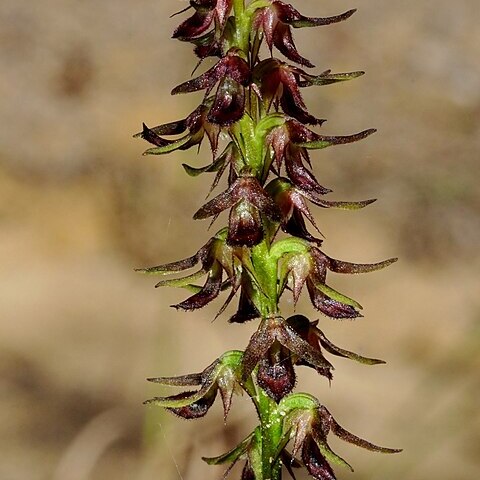Leaf 150–300 mm long; free part 10–20 mm long, ending well below flowers. Spike 10–45 mm long, 5–30-flowered. Flowers moderately crowded, porrect, 6.5 × 5 mm, greenish to purple with reddish purple to purple labellum. Dorsal sepal 4.5 × 2 mm; margins with short hairs; apex sharply pointed. Lateral sepals widely divergent, 6 × 1 mm. Petals 3.5 × 1 mm; margins with short gland-tipped hairs; apex sharply pointed. Labellum tremulous, elliptic to obovate, 3.5–4 × 1.8 mm, thin-textured; margins with numerous short gland-tipped hairs; apex pointed. Callus oblong, constricted near middle, extending nearly to labellum apex (sometimes ending about halfway).
An orchid.

